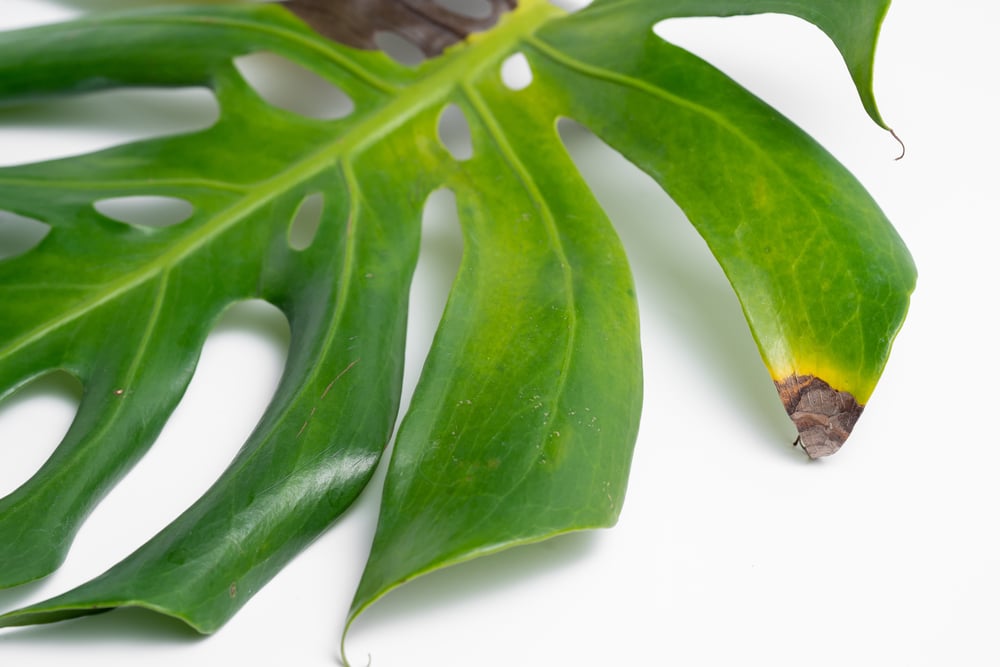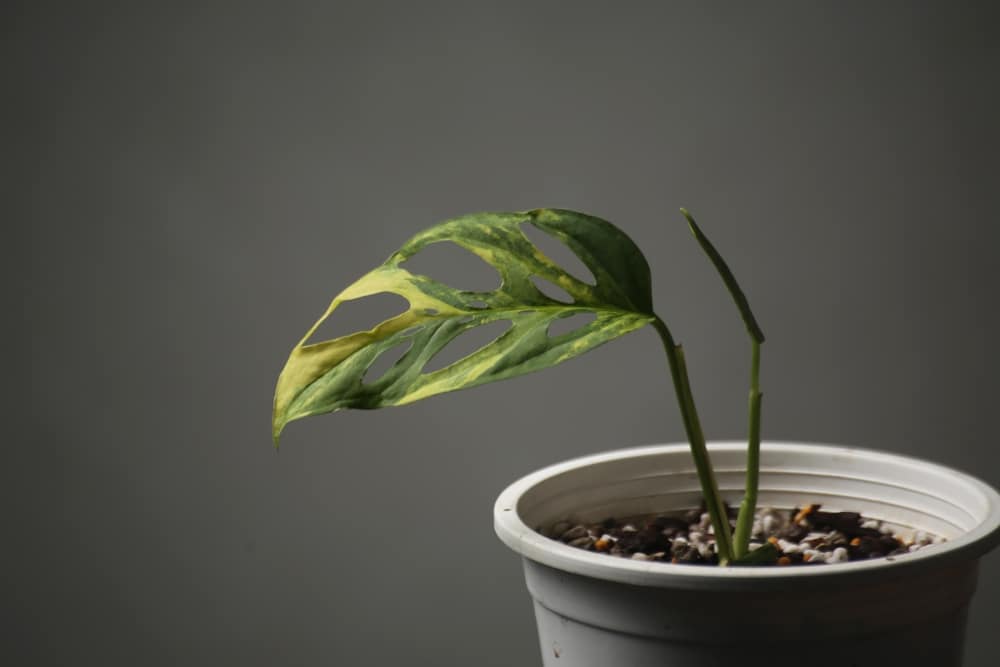Swiss Cheese plants have some of the most interesting foliage around. The Monstera species’ heart-shaped leaves undergo fenestration or have holes develop as they mature (hence the nickname).
Seeing swiss cheese plant yellow leaves can be frustrating, mostly because it affects the way they look. However, you will want to pay attention and address the cause of yellowing so your monstera can continue to thrive and decorate your outdoor or interior landscape.
6 Reasons Why Monstera Leaves Turn Yellow
Watering Concerns
Watering your Monstera can be a bit tricky since it likes to get constantly hydrated but hates sitting on overly wet soil. The key to a thriving swiss cheese plant is to make sure the soil is loose and well-draining and to check first if it’s moist before filling up the watering can.
Watering once or twice a week is probably okay, but in colder regions, you may need to check the soil moisture first. Dip a chopstick or your finger about two inches deep to see if the plant needs watering or not. Also, make sure that excess water comes out of the drainage holes and it doesn’t sit in the container.
Underwatering can also be a problem for the swiss cheese plant. Water on a schedule and more if the days are hot and it’s summer season.
Transplant Shock
Swiss cheese leaves turning yellow is a normal reaction when a plant is transplanted to another location or container. You might lose a leaf or two but overall it isn’t serious, and your Monstera should bounce right back to health in a week or so.
You can reduce transplant shock by doing the activity in the late afternoon or early evening when it won’t be as hot, and watering your plant afterward.
Pests and Diseases
There are several notable diseases that affect Swiss Cheese plants, including powdery mildew, fungal leaf spots, and blight. Fortunately, you can minimize the chances of your plant getting infected by observing proper watering habits and avoiding getting the foliage wet when you give it a drink.
In the same vein, you’ll want to keep an eye out for pests that can cause your swiss cheese plants to turn yellow. Spider mites and aphids are easy to spot, as they leave telltale signs such as webs and white spots on the undersides of the leaves. To combat this problem you can apply a full dose spraying of neem oil or a DIY approach with water and dish soap. Alternatively, you can purchase insecticidal soap or sprays to kill a specific pest or insect that’s living in your swiss cheese plant.
Low Humidity
Monstera plant species are native to tropical regions where there’s high humidity and heat. In the US, swiss cheese can grow outdoors in zones 10 to 12. It’s worth noting that these plants will not survive frost and freezing temperatures, so you’ll need to bring your monstera indoors to overwinter.
Aside from putting your Swiss Cheese plant in a place that gets bright light, you should also take measures to improve humidity levels. Add a saucer filled with pebbles and water, or invest in a small humidifier to keep your houseplant happy and prevent leaf yellowing in Monstera.
No Nutrients in the Soil
Swiss cheese plants often have access to nutrients in the wild via composted leaves and organic matter, but it’s much more limited when they’re confined to a pot or container. Without nitrogen and trace minerals your plant will start to have yellow leaves that will spread slowly but surely.
Feed your monstera with a half-strength liquid fertilizer every month during its growing season so the leaves stay green and healthy. You’ll want to practice control though, as too much nitrogen can lead to swiss cheese plant yellow leaves as well.
Low Light
Lastly, your swiss cheese plant will need adequate lighting to stay healthy. Bright indirect light is best for the Monstera species, and anything too much (direct sun) or too little (a dark area) will result in yellow foliage.
That said, the best place for Monsteras is near a bright window where it can get plenty of indirect light. Since it’s a warm-loving plant it’s best to avoid cold drafts or near heat sources, such as ACs, radiators, and furnaces.

